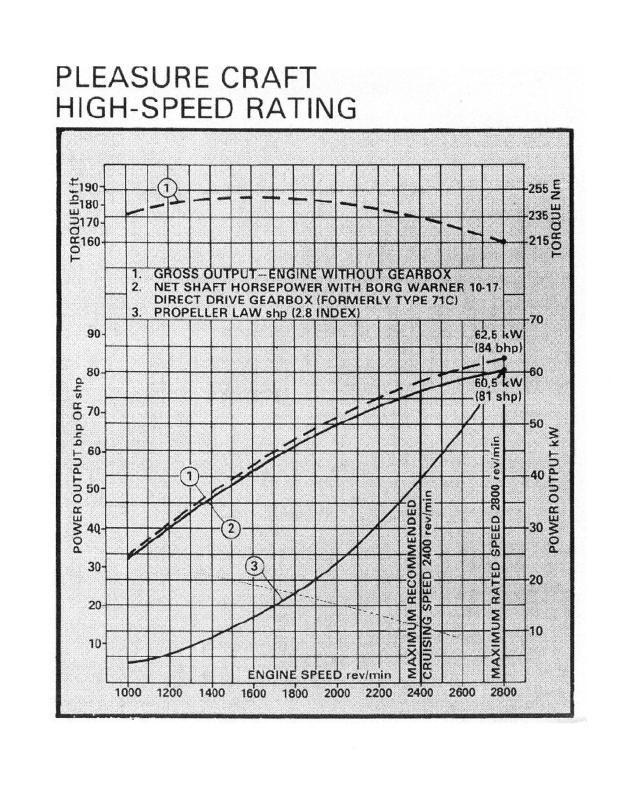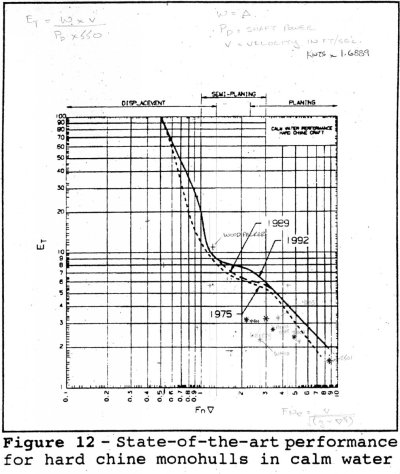- Joined
- Apr 15, 2008
- Messages
- 13,731
- Location
- California Delta
- Vessel Name
- FlyWright
- Vessel Make
- 1977 Marshall Californian 34 LRC
I have been tracking different power settings on my 34 Californian with twin Perkins 4.236 engines over the past year or so. I have run 30-40 hours between refuelings at the same power setting to provide a good sampling for each setting.
I seem to have found the sweet spot I am comfortable with for now, a good compromise between efficiency, speed and noise. If I slow to 7 or 6.5 kts, I'll likely save more fuel and even eclipse 3 mpg but the speed feels too slow for me to endure for a 30 hour test period.
Here's what I have found on my 2800 RPM (WOT) engines:
2350 RPM (84%), 8.0 kts, 3.70 gph, 2.16 mpg
2100 RPM (75%), 7.6 kts, 2.79 gph, 2.72 mpg
2000 RPM (71%), 7.4 kts, 2.66 gph, 2.78 mpg
I'm sure these numbers would pale in comparison to single engine boats, especially the new technology diesels, but I'm happy with this level of efficiency from a pair of old school 1977 85 hp Perkins naturals.
I seem to have found the sweet spot I am comfortable with for now, a good compromise between efficiency, speed and noise. If I slow to 7 or 6.5 kts, I'll likely save more fuel and even eclipse 3 mpg but the speed feels too slow for me to endure for a 30 hour test period.
Here's what I have found on my 2800 RPM (WOT) engines:
2350 RPM (84%), 8.0 kts, 3.70 gph, 2.16 mpg
2100 RPM (75%), 7.6 kts, 2.79 gph, 2.72 mpg
2000 RPM (71%), 7.4 kts, 2.66 gph, 2.78 mpg
I'm sure these numbers would pale in comparison to single engine boats, especially the new technology diesels, but I'm happy with this level of efficiency from a pair of old school 1977 85 hp Perkins naturals.



 Any chance you can boil it all down for the common sailor?
Any chance you can boil it all down for the common sailor?

